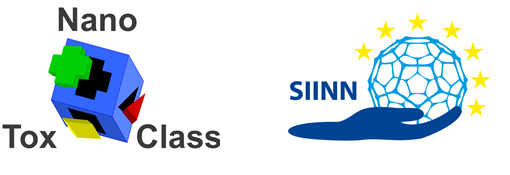Federal Institute for Risk Assessment (BfR)- Coordinator, Germany; Helmholtz Centre for Environmental Research (UFZ), Germany; BASF SE, Germany; Institute of Energy and Environmental Technology (IUTA), Germany; University Hospital Hamburg-Eppendorf (UKE), Germany; Tel Aviv University, Israel; University of Namur, Belgium; StratiCell, Belgium; Instituto de Saúde Pública da Universidade do Porto (ISPUP), Portugal; University of Bucharest (UB), Romania; Robert Koch Institute (RKI), Germany; Evonik Resource Efficiency GmbH, Germany; National Institute of Standards and Technology (NIST), USA.

Nanotechnology is one of the key technologies for the 21st century integrating resources from material, engineering, biological, toxicological and medical sciences and many others. Already by now many products containing manufactured nanomaterials (MNMs) have entered the market in very diverse fields of applications and many more are expected to follow. The interaction with biological systems including organ distribution, cellular uptake, and finally biological effects will be dependent on each of these parameters. This means that currently each MNM variant needs to be tested and assessed on a single, case-by-case basis, resulting in a very complex, cost- and time-intense approach for risk assessment. Thus, there is a strong need to develop grouping and classification approaches for MNM. Grouping or classification of MNM will substantially support regulation of MNM and therefore in turn have a tremendous impact on sustainable commercialisation of nanotechnology. Grouping can be based on different principles based on material properties, taking into account toxic effects on humans, animals, and ecosystems. However, it will be hardly achievable to develop one single grouping system covering all aspects. Thus, for purpose of clarity, here we want to focus on grouping according to human or mammalian toxicity and omit ecotoxicity. Firstly, toxicity endpoints, which will be the basis for grouping, need to be identified. These endpoints need to be measurable, preferable in a quantitative manner and be of predictive nature. In addition, an understanding of physicochemical properties (so called descriptors) of the MNM is required, which are key in determining a certain biological effect. Grouping based on MNM physicochemical properties seems to be achievable. In contrast, grouping according to biological effects and toxicity seems a more challenging task. Many studies assess only few selected endpoints such that for a wide range of MNM much data exist, but those data have large gaps. Rarely a single material is examined for a complete spectrum of endpoints so that many MNM are simply not well characterised from a toxicological point of view. In addition, few systematic studies exist that by purpose vary only a single parameter at a time. This leads to the situation that in many studies a restricted number of endpoints are analysed for a small panel of usually very different materials. As a result, there is a poor systematic understanding of how changes in a single parameter would affect toxicity. Furthermore, characterisation of MNM is frequently incomplete. MNM are usually extensively characterised directly after synthesis but not always in the biological matrices relevant for the test or in a real product. It is well known that MNM are modified in different biological matrices, due to interaction with biomolecules in their immediate environment, which might also influence their agglomeration status. In many cases different studies employing similar MNM report contradictory results, so that our understanding of which physicochemical properties are the drivers for toxicity is very limited. This is a major obstacle hindering the development and establishment of grouping approaches.
The aim of our project is to develop criteria for grouping on the basis of available data in literature and in the possession of finished or nearly finished projects. In order to develop grouping criteria, we will consider established endpoints such as genotoxicity, inflammation, or oxidative stress but also consider other data including mode of action and Omics. Omics data are usually well suited to support grouping and furthermore allow insights in the mode of action. When cellular signalling is included in the analysis, it even reaches beyond the mode of action concept and enables the definition of decision points which result in a certain mode of action. The understanding of those decision points will substantially improve the grouping and will also enable guidance of MNM design in order to avoid undesirable cellular reactions. We will identify data gaps in existing data and intend to fill them in a systematic, targeted way. Grouping will be applied for a selected panel of existing MNM. For this purpose, we will include different classes of MNM to establish grouping, including SiO2 based MNM, TiO2, carbon black and a nano-sized pigment. For SiO2, of which the surface is prone to chemical modification, we will use a library of systematically surface-modified MNM. The validity of the grouping system will be confirmed experimentally. For further verification, a few additional MNM will be selected during the course of the project, grouped accordingly, and grouping will be again verified experimentally. Grouping will not only help to prioritise materials for detailed testing but also support risk assessment of MNM and might become a valuable tool in safe-by-design approaches.